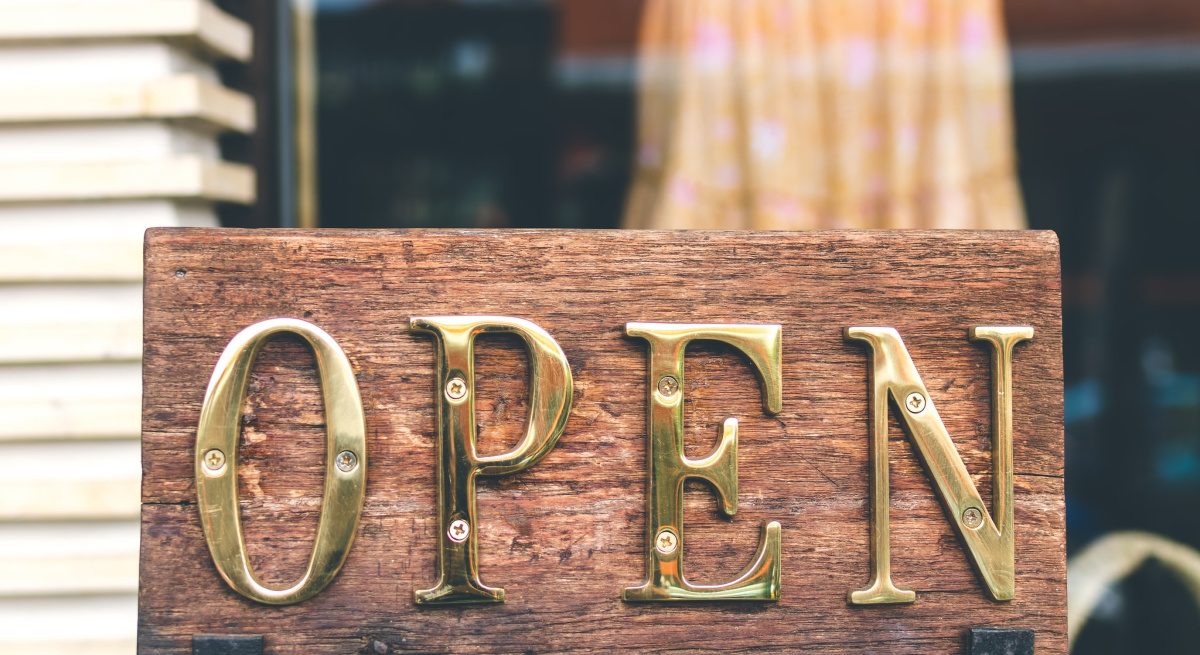Four Ways to Streamline Reopening Procedures for Restaurants
4 Min Read By Nick Haase
We’re open.
Have two words ever sounded so sweet?
Restaurants owners across the country are cleaning, sanitizing, and organizing in preparation for reopening in the post-COVID-19 era.
Though a handful of U.S. states are continuing to mandate complete restaurant dining room shut-downs, the majority of them are engaging in either regional or complete reopenings.
Undoubtedly, most restaurant owners are eager to flip their closed signs and to welcome back their beloved patrons. However, it won’t be business as usual. Common sanitation precautions being taken include lowered occupancy limits, mask requirements, and in-house social distancing.
Knowing exactly what is expected of you as a restaurant manager can be confusing. Safety ordinances can vary widely by city, county, and sate. As mentioned in The Restaurant Reopening Blueprint:
“Restaurant management is a demanding affair; re-opening a restaurant in the face of a global pandemic promises to be complex and challenging… Your experience will be nuanced. There is no single flowchart or checklist, and every restaurant and locale is unique.”
Restaurant managers who develop clearly-documented policies, operational checklists, and clear communication systems can simplify the process for everyone. Here are four tips for streamlining and solidifying reopening procedures during this unusual time period:
Update Policies
If you haven’t already, prioritize updating your restaurant’s existing policies and operating procedures in writing. Your safety and sanitation policies should be in alignment with the latest FDA, CDC, state, and local policies regarding COVID-19.
Investigating recommended guidelines from various sources may seem overwhelming, but you will quickly notice significant overlap. For this reason, both the National Restaurant Association and the US Foods Holding Corp have issued recommended reopening guidelines for the restaurant industry.
Update existing policies to accommodate:
-
Social distancing
-
Employee well-being
-
Customer well-being
-
Sneeze guards/barriers
-
Cleaning/sanitizing/disinfecting
-
ServeSafe and food handler certification
All of these policies should be clearly documented, and all employees should be required to read and sign-off on them. Consider implementing an electronic docu-sign system to eliminate the unnecessary need for touching and exchanging paper, like receipts. Importantly, make your updated policies visible externally to help assuage concerns from customers who may still be hesitant to re-integrate into the public arena.
Create Sanitation Checklists by Section
Once employees are informed of your restaurant’s new safety and sanitation policies, your main challenge will be compliance. While most team members want to follow instructions designed to keep everyone safe, changing familiar behaviors and habits can be challenging.
Adapting to new rules maybe even more difficult for employees who have been with you the longest. Depending on your unique establishment, you might be requesting new behaviors like rolling clean silverware, sanitizing table condiments, and using gloves more often.
For these reasons, managers should create organized safety and sanitation checklists that leave zero room for ambiguity. The Restaurant Reopening Blueprint recommends dividing your establishment into distinct zones when planning for customers:
-
Pre-arrival/Arrival
-
Entry/Exit
-
Dining Room/Bar
-
Restrooms
Customers should know exactly what to expect within each zone via engaging with social media updates, signage, and greeting team members. Furthermore, each zone will necessitate distinct cleaning needs, and should, therefore, have its own sanitation checklist.
Go Digital
While some establishments utilize paper cleaning logs, we recommend switching to sanitary digital checklists. Modern connected worker systems provide restaurant managers with a convenient platform for creating and assigning digital checklists that can be accessed via smartphone.
Not only are digital checklists more sanitary––unlike paper checklists, mobile devices can easily be cleaned and sanitized. They also provide the added benefit of digital audit trails, should you need to validate your team’s compliance for any reason.
Translation: Managers can see when items have been completed and by whom in real-time. As a bonus, some operational management platforms can even be downloaded from the app store completely free of charge.
Additionally, restaurant managers might also consider switching to contactless payment systems. Automated ordering systems and mobile ordering apps need not be limited for take-out. Assess what options make sense for your unique place of business.
Improve Team Communication
Finally, the most important way to streamline new operational procedures is via clear communication. Front-of-house (FOH), back-of-house (BOH), and management should feel comfortable immediately discussing any questions that arise related to new policies.
If you’re following the Restaurant Reopening Blueprint’s guidelines, you will be breaking FOH into two teams: Restaurant Safety and Customer Engagement. Understandably, unanticipated situations might arise that warrant an immediate response.
The easiest way to maintain streamlined communication in such situations is through a business messaging app because:
-
Everyone has a smartphone in his or her pocket.
-
Restaurant managers and owners aren’t always easy to track down.
-
Business messaging apps allow managers to segregate communication threads into restaurant-related groups.
Unlike standard text messaging, business messaging apps allow managers to create chat groups between individuals, FOB, BOH, vendors, and more. Beyond real-time chat, some apps also allow restaurants to upload training manuals, create work orders, and manage operations all in one place.
Streamline Operations with Simple to Use Technology
Is your restaurant utilizing the latest technology to update policies, take orders, create checklists, and communicate with team members?
If not, you might want to consider the free to low-cost applications now available for download. While operation and procedure apps can’t remove the mixed emotions associated with re-opening, they can simplify the process of familiarizing team members with new standards.


